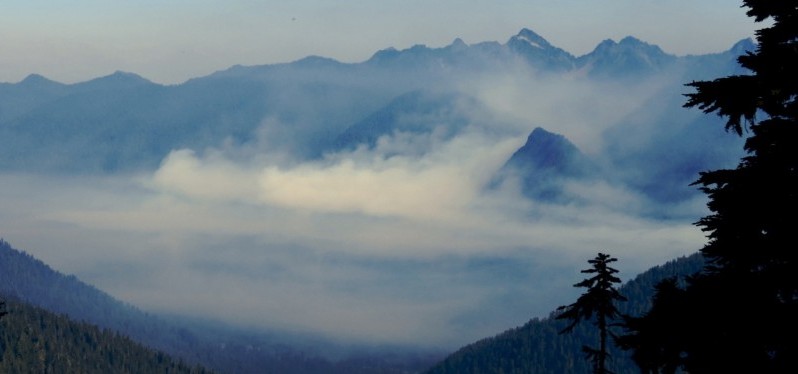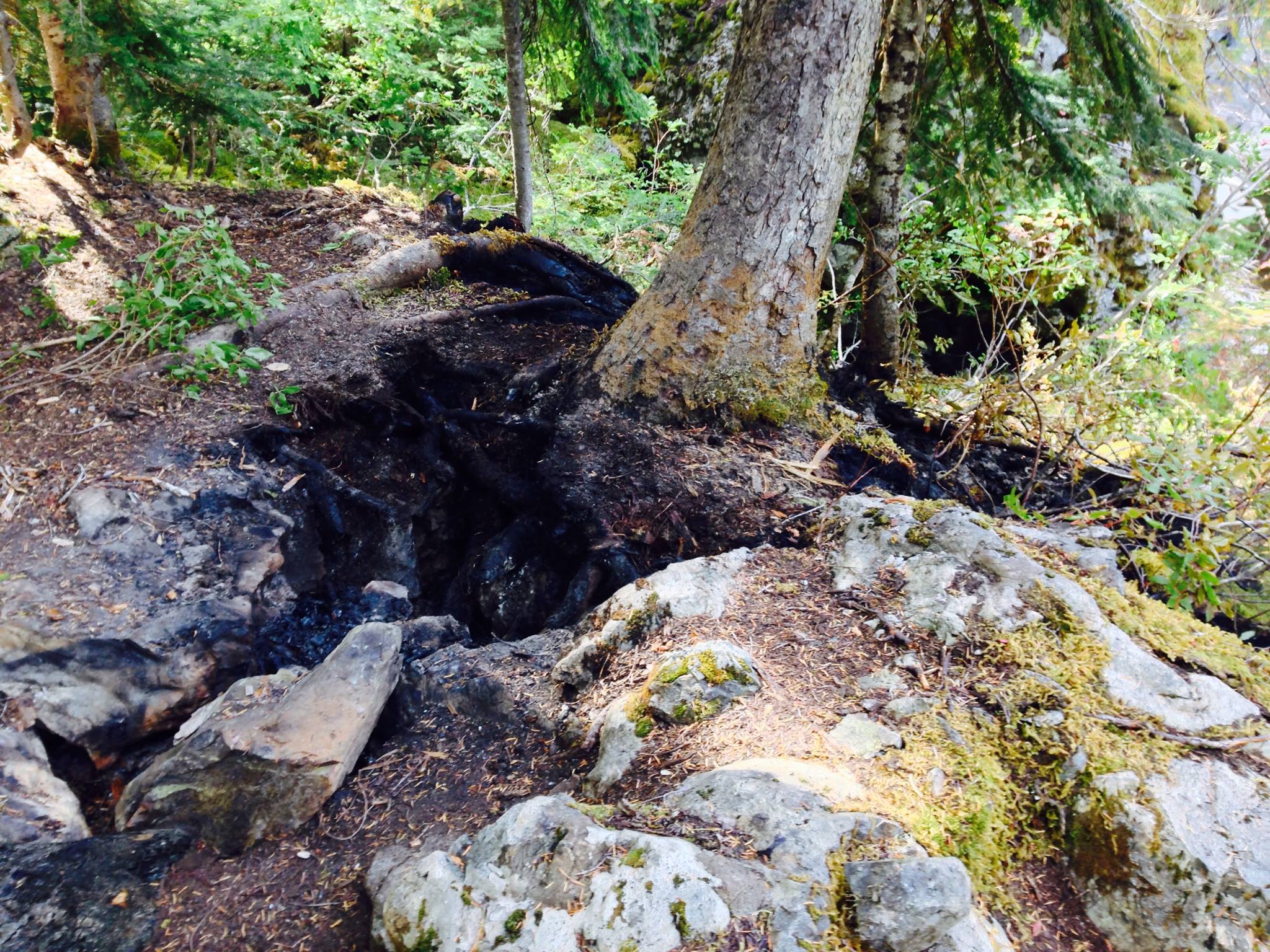I awoke to the smell of the rainforest burning. I wasn’t shocked by this, in fact, it was what I was hoping for.
Five miles to my north, the Paradise Fire was burning over 1,200 acres of Olympic National Park wilderness along the Queets River, and showed no signs of slowing down. High above the North Fork of the Quinault on a rarely hiked trail, I was close the blaze that has been burning in the Queets Rainforest of Olympic National Park. After a restless night sleeping at Three Prune Camp on the Skyline Trail, I was anxious to catch my first glimpse of the fire. On July 2nd, 2015, I finally witnessed the Paradise Fire in all of its smoky glory, and the image is something I won’t soon forget.
From my camp above Three Prune Creek, I was just a short hike from getting my first glimpse of this wildfire. The night before, I fell asleep with the scent of a burning forest in my nose. With no fires allowed in the backcountry of Olympic, I knew that this was the Paradise Fire just over the ridge. Starting at 11am, I had hiked 13 miles to get to the camp, hoping that the hot summer heat would not deter my resolve to reach the the Skyline Ridge Primitive Trail in Olympic National Park. My goal was simple; I wanted to find a spot to see the Paradise Fire burning and grab some pictures. Initially, I was going to run up to Kimta Peak, a 5,399 foot peak surrounded by a moon-like landscape on either side. However, with temperatures well in the 90s by 11am, as well as the limited and rare access to water, I decided to rethink that decision- especially after I saw how the smoke was going to ruin visibility.
On July 2nd, smoke from the Paradise fire became visible all around the Olympic Peninsula, giving residents around Puget Sound an amazing sunset.
“The Paradise Fire generated considerable smoke visible from the Hurricane Ridge Visitor Center and local communities on Thursday, as the warm temperatures, low humidity, and dry conditions created favorable fire conditions. Relative humidity reached its lowest point of the week at 31%. Vegetation in the Paradise Creek drainage and around an un-named creek immediately to the east were the locations of the most active burning. Both creeks flow off of Pelton Peak on the northern portion of the fire. Crews have been successful in confining the fire north of the Queets River and to the west end of the existing fire perimeter.”
As I stood along the primitive Skyline Trail, the entire Queets River Valley looked to be filled with smoke. The ridges leading to the remote summit of Pelton Peak were quickly being consumed with a white blanket, green old-growth forests standing out in sharp contrast. I stood there for an hour, taking in the sights as the lingering smell of campfire filled each breath. From nearly 2,000 feet above, the Paradise fire in the Queets looked unstoppable, despite reports that the fire is 20% contained.
As I wrapped up taking pictures, I decided to hike down to the North Fork of the Quinault toward Elip Creek. Hiking by Kurtz Lake and all the small ponds along the trail, I was shocked that every pond and lake was empty, with just small trickles of water visible. Frogs and tadpoles filled each drop of water, and bears wandered the meadows, seemly in shock at the lack of water and the heat. The scene, with the Olympic Mountains expanding out beyond the smoke filled horizon, was sobering. This is the driest year since 1895, and with a fire burning behind me, I started worrying about the rest of the summer. While burn bans are in effect for the majority of the State of Washington, the combination of drought and heat is proving to be costly to wilderness.












